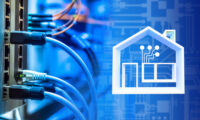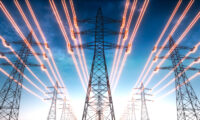Keeping Your Electronics Safe During Lightning Storms and Severe Weather
It’s springtime, the time of year when seasonal storms march their way across the Lone Star State and continue through hurricane season. As a coastal state, Texas is no stranger to severe weather, including thunder, lightning, tornados, and heavy winds and rain. A loud crack of thunder and pop of lightning is unnerving at the very least, but hazardous to our homes and health at their worst.
Beyond ensuring personal safety, how can you keep your electronics safe during a storm? You may be surprised at some of the recommended safety measures, but a few extra steps early on help keep you and your home from danger.
Prep Before a Storm
You can ensure many safety precautions in advance of severe weather, including the following:
- Install surge protectors. Power strip surge protectors help limit the voltage in case of a minor power surge like a tripped circuit breaker or distant lightning. These may not, however, prevent damage to electronics like computers or appliances during a large power surge like a lightning strike on your property. Don’t rely on these as your main source of protection. Read on for more ways to protect during a storm.
- Install lightning rods. If you live in an area prone to lightning strikes, it may be wise to install lightning rods on the top of your house. The copper or aluminum rod should be taller than your house. With a thick wire, it’s connected to a grid underground away from the home. This helps absorb and disperse the lightning’s surge safely away from your house and nearby power lines.
- Invest in a whole-home lightning protection system. To prevent an electrical surge from entering your home’s wiring, consider hiring a licensed electrician to install a whole-home lightning protection system. Installed next to your electrical panel, it stops a major system-wide surge from entering your home. You’ll have peace of mind if you’re away and unable to unplug devices or want to protect major appliances that remain plugged in, like your refrigerator.
- Save important phone numbers. Ensure you have the proper phone number of your utility company in case of a power outage and your insurance company if there’s any major damage.
During a Storm
- Unplug electronics. Experts agree that unplugging devices is the number-one way to prevent damage to them. It may seem like a hassle, but if you’re at home and hear thunder or severe-weather alerts, take a few minutes to unplug computers, gaming devices, TVs, coffee makers, toaster ovens, microwaves, and more. Yes, even your electric stove or washer and dryer need protection in a storm. If you think the storm will pass quickly, unplug the refrigerator for up to four hours, but keep it closed to stay cold. After four hours, food will spoil and needs to be tossed. Freezer food can last longer.
- Keep a charged phone. Make sure your phone is fully charged or you have a wireless charger (with full power) in case you need it.
- Remember non-traditional electronics. Don’t forget to unplug items that aren’t inside the home, like your electric car, golf cart, and items in your garage and patio (like tools or lamps).
What Not to Do
- Don’t unplug your Wi-Fi if it’s your only connection to weather updates. This may seem counter-intuitive, but if you need Wi-Fi for connecting to the internet, it may be worth the risk and the cost to replace to keep your modem and router plugged in. If you have mobile data that allows you to get weather alerts, then you can assess the potential risk and consider unplugging them.
- Don’t touch power cords. Once lightning starts, it’s unsafe to touch power cords. As you become aware of advance storm warnings, go ahead and unplug devices.
- Don’t go near electricity-conducting items. During a storm, don’t go outside and deal with items like metal ladders or patio umbrellas; do so in advance.
- Don’t use water. Some homes may still have metal piping, so it’s best to avoid showers and baths during storms, as well as washing dishes.
After a Storm
- Continue listening to weather updates. Make sure the storm has passed and another wave isn’t on its way.
- Assess the damage. Walk around the inside and outside of your home to check for damage, such as fried outlets or electronics indoors and downed lines or potential fires outdoors. Don’t touch any downed wires or poles.
- Check your circuit box. If it appears most electricity is working but certain areas remain without power, see if any breakers were flipped with a surge. If all else seems safe, switch the tripped breaker back on.
- If electricity is out or power lines are down, call your utility company. While several Retail Electric Providers (REPs) like Payless Power manage your billing, Texas has five utility companies that provide electricity and manage power lines. Your utility company is listed on your bill and is based on where you live in Texas. Contact them below:
- Texas-New Mexico Power 888-866-7456
- Oncor Electricity 888-313-4747
- CenterPoint Energy 800-332-7143
- AEP North 866-223-8508
- AEP Central 866-223-8508
- Call loved ones and check on neighbors. Let others know you’re safe and check on the wellbeing of others. Call for help if there is severe damage or injury.
- Beware of scammers. You may start getting calls from insurance scammers if your home has damage. Only work with trusted companies with recommendations and good reviews.
Payless Power works to ensure Texans have reliable, affordable electricity year round. Payless Power offers a variety of plans to suit your needs, including pre-paid electricity options that don’t require a deposit or credit check. Plus, save money every month with daily usage and balance updates and easy ways to pay via app, online, or over the phone.
What our customers are saying
See why our power customers say we're the best electricity provider in Texas!
I was worried about getting electricity for my home through a prepaid company. I was calling around to see different rates then going through all the hassle of credit checks while dropping points each…
I have been with this company for several years and have been very happy since. Even when I moved, they made my usually stressful situation very easy and carefree. I recommend them to everyone that I…
I have enjoyed the service for 2 years now. In the beginning this service was planned to be temporary but with the service being so effective for me i decided to keep it for the long haul. I’m a happy customer.






